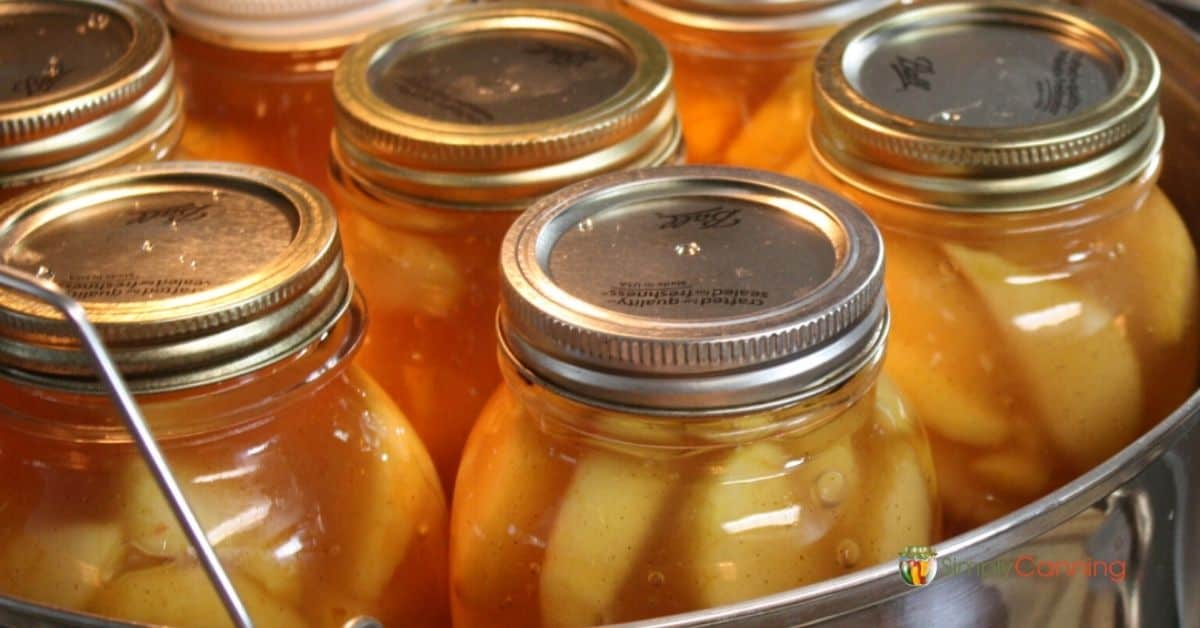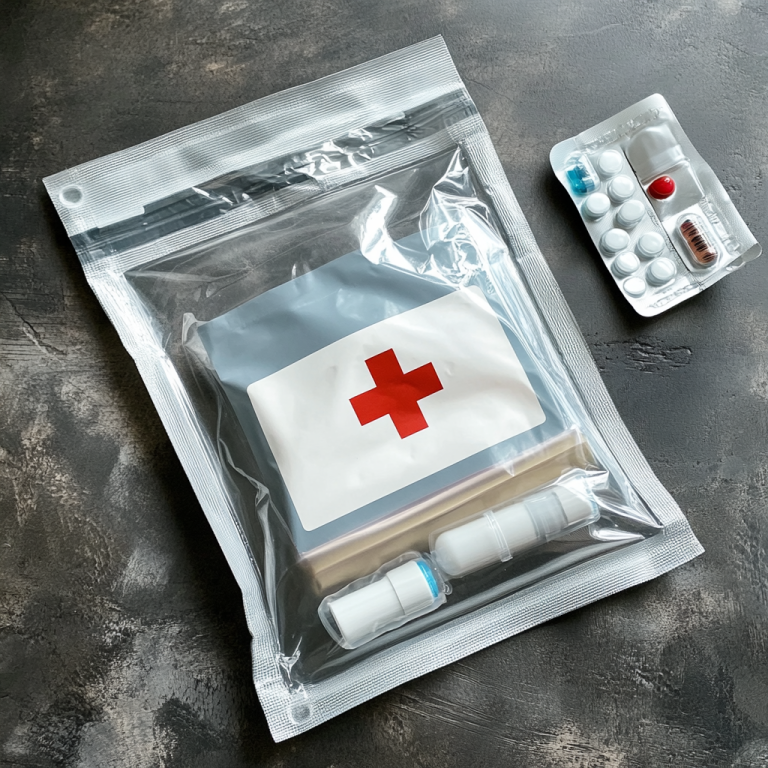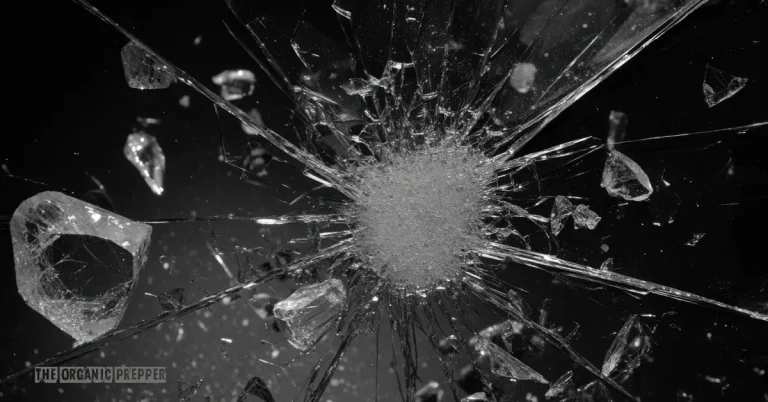Do I choose a water bath canner or a pressure canner? And why? That is a common question ~ and a good one. The canning methods you choose are the most important factor in canning safety.
Three types of canning methods are water bath canning, steam canning, and pressure canning. Water bath canning involves using pots deep enough to submerge the jars, which then boil for processing. Pressure canning, on the other hand, uses canners with dials and gauges and applies heat with pressure. Steam canning is a third good option. It is an acceptable substitute for the water bath.
How to Choose the Right Canning Method
Why is using the right canning method so important. Clostridium Botulinum. That’s the biggest reason. There is other spoilage you want to avoid. But Botulism is the biggie. No fear! It is surprisingly easy to avoid. Choose the correct canning method. :).
Read more details on botulism in home canning and why I’m not afraid.
What are the 3 Methods of Canning
To learn more details about how to use the canners and the steps for each canning method you can look at these articles.
All of these canning styles, use canners with a rack. You’ll also want to use canning jars, two-piece lids, and other supplies. The links to the articles above give specifics on each method.
Low Acid or High Acid Foods. What’s the Difference?
The canning methods you choose will depend on the acidity of the food you are preserving. If you are like me, you have absolutely no idea of the pH levels in your foods. So just remember two easy things:.
- Low-acid foods contain very little natural acid. They will have a pH of 4.6 or higher. Vegetables, meats, dried beans and all soups are low-acid foods. These will need to be preserved using a pressure canner.
- High-acid foods contain enough acid to have a pH level of 4.6 or lower. Most fruits and fruit products, jams, jellies, marmalade, and fruit spreads such as apple butter are included in the high-acid group. These will need to be preserved using a water bath canner or a steam canner.
A few notes…
- Pickles (even vegetable pickles, relishes, and sauerkraut) may be safely water bath canned because of the added vinegar or fermentation. This adds to the acidity of the food. This doesn’t mean just add vinegar to any recipe. You need to use a tested recipe so you know that the vinegar added is sufficient and the acidity of the food is sufficient.
- Tomatoes are a special case. The most recent recommendations indicate that you should add lemon juice or citric acid to acidify tomatoes before canning.
There are other methods that you should avoid. Methods that your grandmothers may have used with no problems and taught you about. There is a list of them at the bottom of this page to help you decipher what is still valid and what you should consider changing.
Botulism is a type of food poisoning that thrives in low acidity. This is why it is important to process low-acid food by pressure canning. A pressure canner obtains the high level of heat necessary to kill botulism spores.
Choose the Right Method for the Right Food
Remember that low acid needs the pressure canner and high acid needs the water bath. When selecting your food, it is important to keep the following things in mind:
- Try to select local fruits and vegetables. If you leave near an orchard or u-pick farm, purchase your produce directly from the farmer. Not only is the quality better, it helps support your local community. Make sure to call before your visit to see what is available.
- Look in your own garden. Do you have a strawberry patch? Try making strawberry jam.
- What does your family eat on a regular basis? Does your family eat a lot of peanut butter and jelly sandwiches? Try making your own grape jam.
- Start with something simple, something that you will be excited to eat and share. If you preserve something you love, you will be encouraged when you open a jar. You’ll be able to say, I did this! It will motivate you onward and upward.
Once you decide what food you’d like to can, you must choose the canning method to match the food type. The top two recommended, safe methods are pressure canning or water bath canning. Steam canning is an acceptable substitute for the water bath in many cases..
Where to start?
What is the best canning method for beginners?
If you are just learning to can, I recommend starting with fruit and a water bath canner. Of the two canning methods, the water bath is more beginner friendly.
Canning peaches or making applesauce is a great way to start.
The black canner you see here is inexpensive and can often be found used. Personally I love my stainless steel water bath canners; they are beautiful as well as useful. But if price is holding you back, try the less expensive route to get started.
Water bath canning is less intimidating. Plus, the results are so yummy! Achieving a delicious product will encourage you to continue canning.
Once you’ve gotten your feet wet, you’ll realize canning is a fun, satisfying and valuable hobby. Or a way to bring healthier foods into your diet.
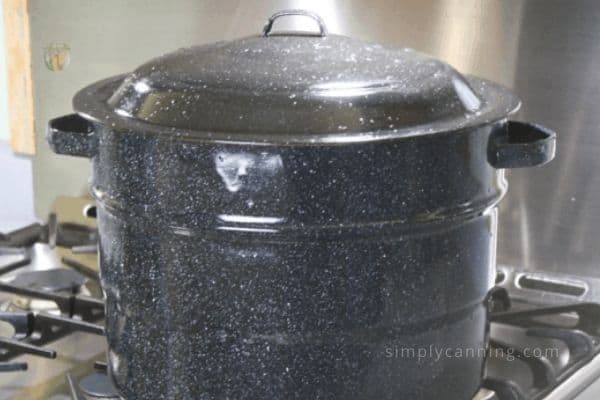
For the ambitious!
I don’t even like to use the phrase ambitious because it makes it sound so scary and hard. It is not! For those who are ready to plunge in…start pressure canning. Really, it is not hard. Just do it right, and you will be filling your pantry in no time at all.
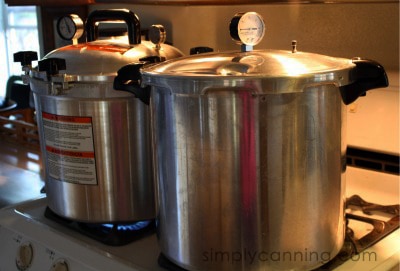
Canning Techniques from the Past
“But my grandmother always did it this way.” Canning methods have come a long way since Grandma’s time. Yet, some canning methods are still being used that are not considered safe anymore.
Don’t risk it, leave it in the past. I have an entire section on various canning safety questions you may have.
Check this link out and see if your question might be there.
If you are using home canning recipes handed down from your mother or grandmother…be aware of the safety issues.
Some of those recipes are fine! Go ahead and use them. But be aware of current USDA recommendations. Things have changed since Grandma’s times. New bacteria have developed. Acidity levels have changed in our foods. Check out those recipes against new studies.
Dry Canning
Dry Canning is a more recent canning method that I’ve seen promoted in many canning groups. It involves canning vegetables without liquid, which isn’t safe. I did a video chat about dry canning here. Read more about dry canning here.
Open Kettle Canning
In this method hot, sterilized jars are filled with hot food. The seals and lids are placed on the jar and the food is allowed to cool. Often with jams and jellies, the jars are inverted on their tops. Thus this is sometimes called the “inversion method”.
This usually creates a good seal. However, while placing your food in the hot jar, the food is exposed to air and the utensils used to transfer it into the jar. Even during this short time, your food may become contaminated. While you have food that is sealed, it is not necessarily sterilized. Spoilers may have entered your jars.
I know women who do this with their Jam Recipes and Jellies. They would probably roll their eyes at me. They have had no problems…yet.
I have been tempted to try this method. After all, they didn’t have any problems. However, every time I think about it, I’m uneasy. I decided to take the extra step and process using the suggested recommendations. It’s a lot of work making your jam. I don’t want to deal with mold later. Spoilage is common with open kettle canning.
I LOVE peace of mind. Why take the chance? The added effort is minimal.
What is Oven Canning?
Oven canning or oven processing is another unsafe method. This involves processing the filled jars in the oven. Ovens are not consistent enough to be sure they reach the heat level needed to kill botulism.
Oven temperatures may vary. The dry heat produced in ovens does not penetrate the jars as quickly. Heat circulation is not the same in an oven.
There is also a method of preserving dry goods that is called ‘oven canning’. This is not canning at all, so don’t get them mixed up. And oven canning dried goods is not safe either. By heating in the oven, you will most likely introduce moisture into your jar of dried goods. Then the jar seals that moisture in and spoilage is likely.
Other Unapproved Canning Methods.
- How about processing jars in a dishwasher? No, not safe. You can certainly use the dishwasher to wash your jars and keep them warm before packing. But it is not safe to try to process food packed jars using a dishwasher.
- How about adding aspirin to your jars? Nope…NOT safe either.
Decision Time: You have to decide for yourself.
USDA Extensions: Do They Really Know Best?
Tested recipes are recipes that have been tested by the organization called the National Center for Home Food Preservation. Yes this is an agency through the USDA.
Now I can just hear some of you saying…that they are just being overly cautious. You don’t trust their recommendations. Some believe the whole goal is to make us not preserve our own food.
I truly have considered that issue. I’m not one to just go with the government flow. So when I hear that the recommendations are over the top too conservative, I really DID think about it. Honestly!
This testing that has been done was done years and years ago. They especially put in time and money to this project during the wars where the goal was a couple chickens and a garden in every yard. At that time, Food Preservation was encouraged.
I decided for myself that my peace of mind is worth the small amount of effort to abide by the suggested procedures. You have to decide too.
Frequently Asked Questions
The best method for canning depends on the type of food you want to preserve. Here’s a breakdown: For low-acid foods (pH of 4.6 or higher): Pressure canning is the best method. It uses high heat and pressure to safely preserve low-acid foods like vegetables, meats, and soups. For high-acid foods (pH of 4.6 or lower): Water bath or steam canning are the best method. High-acid foods include most fruits, fruit products, jams, jellies, and fruit spreads.
Water bath canning is generally considered the easiest method for beginners. The process is simple, involving placing filled jars in boiling water for a specific amount of time, which varies depending on the recipe and altitude. Water bath canning is commonly used for high-acid foods, such as fruits, jams, and pickles.
The safest method for canning depends on the acidity of the food you want to preserve. Pressure canning is not any safer than water bath or steam canning as long as they are used in the appropriate setting. Pressure canning is the best and safest option for low-acid foods, while water bath canning is the best method and safest for high-acid foods.
Some Posts to help you Decide
Botulism is food poisoning caused by improper processing and handling. Thankfully, it’s very easy to avoid it altogether with some common sense and best practices. SimplyCanning explains here.
This page has to do with the issue of boiling low-acid foods prior to eating them – not during the processing! SimplyCanning clears a few things up about this misunderstanding.
There are many misunderstandings in canning pertaining to “Grandma’s techniques” from a few generations ago that are no longer safe. Learn why you should use up-to-date methods at SimplyCanning.
Pin This to Find Later!
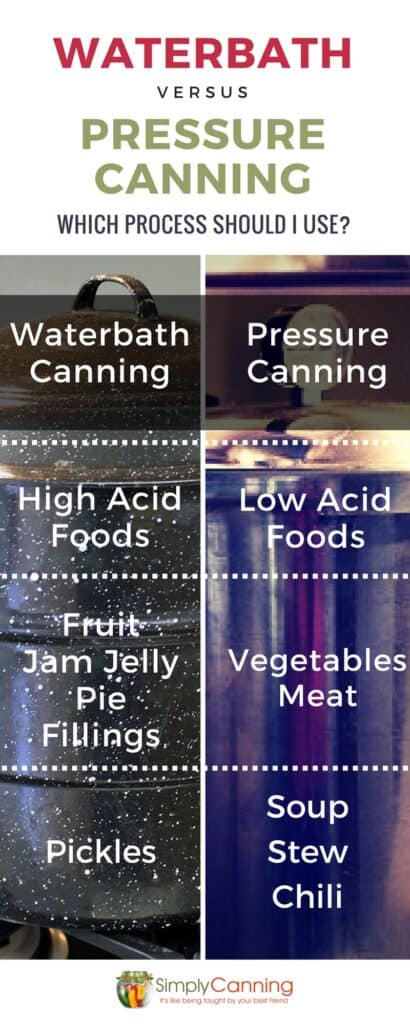
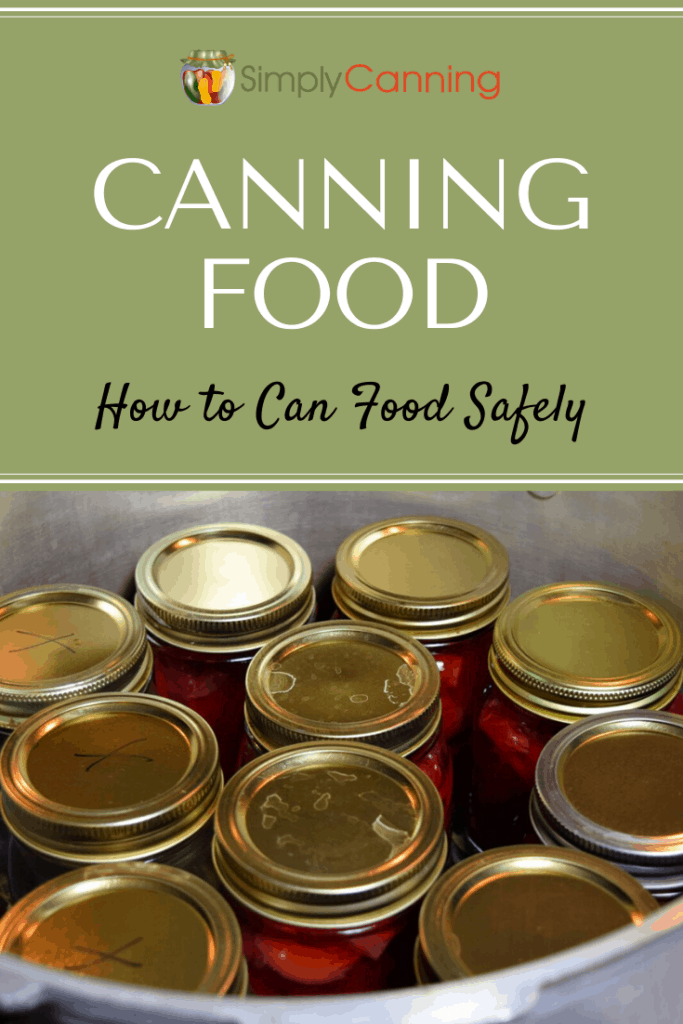
Page last updated: 10/21/2021







